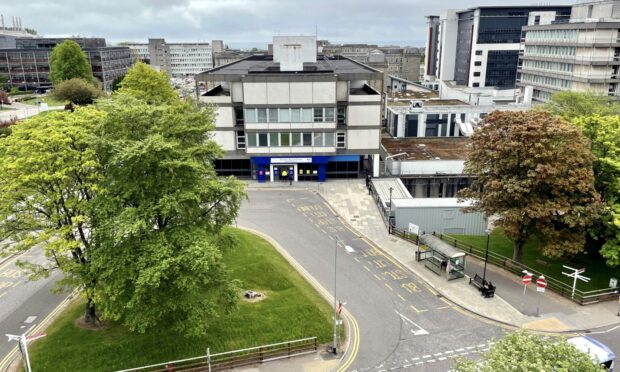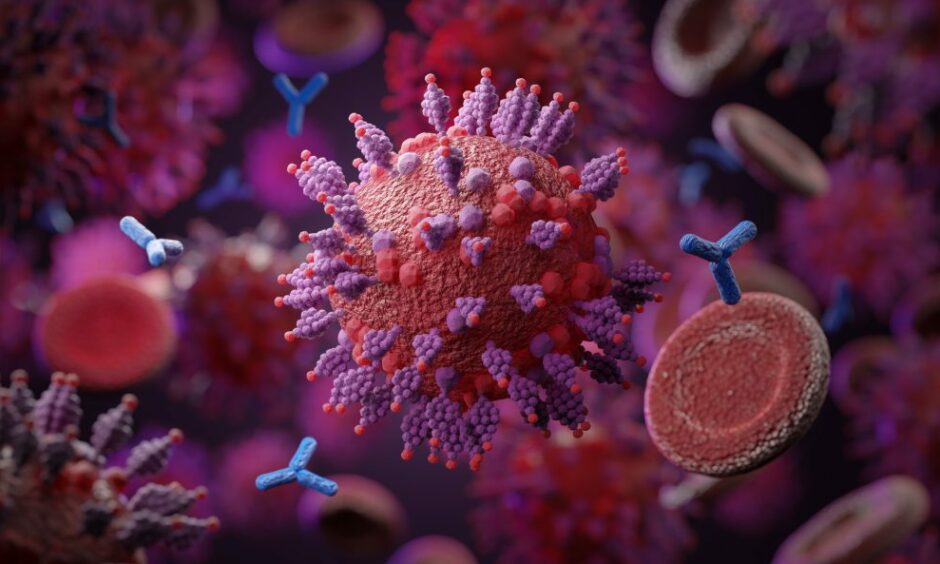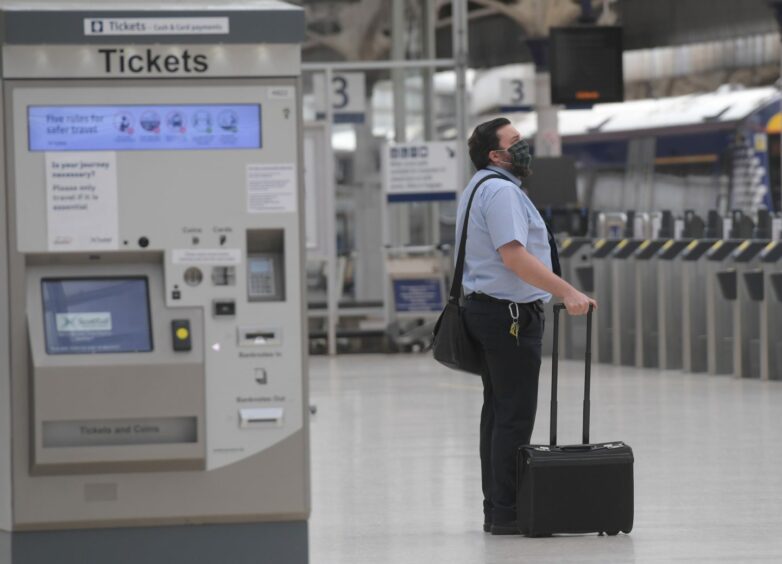Around 12 people a day are being hospitalised with Covid in Grampian just now, with new variants triggering another rise in infections.
The latest estimates show around one-in-30 Scots (3.3%) were suffering from Covid in the week to June 10 – up on the one-in-40 (2.5%) the week before.
Experts believe two new sub-lineages of Omicron – BA.4 and BA.5 – are behind the jump.
While they seem to be more transmissible, further research is due this week on exactly how harmful they could be.
But their effects are already being felt on the front line of healthcare.
Pressures reignited: 12 new hospitalisations a day
Today, Aberdeen Royal Infirmary is sitting at more than 90% occupancy.
Pressures are also being felt at Dr Gray’s in Elgin, Royal Cornhill and some of the north-east’s community hospitals.
Across Grampian, there are around 12 new hospital admissions with Covid every day.
Jillian Evans, the health board’s head of data intelligence, said: “That’s on top of a very full hospital – and before we’re seeing the effects of this new wave.
“It puts us in quite a precarious position, and a time when you least expect it.”
She added: “I’ll be perfectly honest; here we are at mid-summer, and it feels like mid-winter.
“It’s busy constantly with people in hospital, delayed in hospital.
“Every part of the system is under pressure and we don’t want to let Covid transmission get out of control [now] and put further pressure on admissions down the line.”
How do these Covid variants affect people in Grampian?
It’s thought these new Omicron sub-variants are playing a large role in the current spread of Covid.
Early signs suggest they favour infecting lung cells – similar to Alpha and Delta – rather than respiratory tract tissue like other Omicron sub-variants, which may explain why recent cases have largely appeared milder.
Infection numbers are ticking upwards across the UK, as well as many other countries in Europe and throughout the world.
Jillian says this is likely paving the way for a third wave of Covid by the end of the year.
And the ever-changing virus makes it hard to predict what could happen next.
“There’s no clear evidence yet about the harm that they are inflicting,” she said.
“But we do know they’re reinfecting people who had previous strains of Omicron.
“So even people who had BA.2 a few weeks ago, they can be reinfected.
“There isn’t a lot of protection offered from previous strains of the virus.”
What happens next as wave three looms?
Jillian says it’s likely that a pattern will form where Omicron, and sub-variants of it, drive “repeated” waves of infection.
And, with the constant emergence is new variants, it means there’s no guarantee the disease will be milder every time.
But there are still steps we can all take to help limit the coronavirus now.
People who are unwell should keep away from others to help limit the spread of Covid in Grampian – and Jillian recommends people continue to use face coverings in public spaces.
She’s also encouraging people to check they’re up-to-date with their Covid jabs and boosters.
“People have got Covid fatigue, but it is still here,” she said.
“Even if you think you won’t get too ill and just have to live with it, it impacts the rest of your life – the economy, and businesses that can’t run because staff are unwell.
“And with long Covid… a significant number of people are experiencing symptoms after four weeks – some after two years.
“It’s well worth considering ways we can manage [this] transition, beyond the idea the acute illness isn’t so bad.”
Read more…
Coronavirus in Scotland – track the spread with these charts
Call for more investment in long Covid research amid ‘postcode lottery’ of care




Conversation